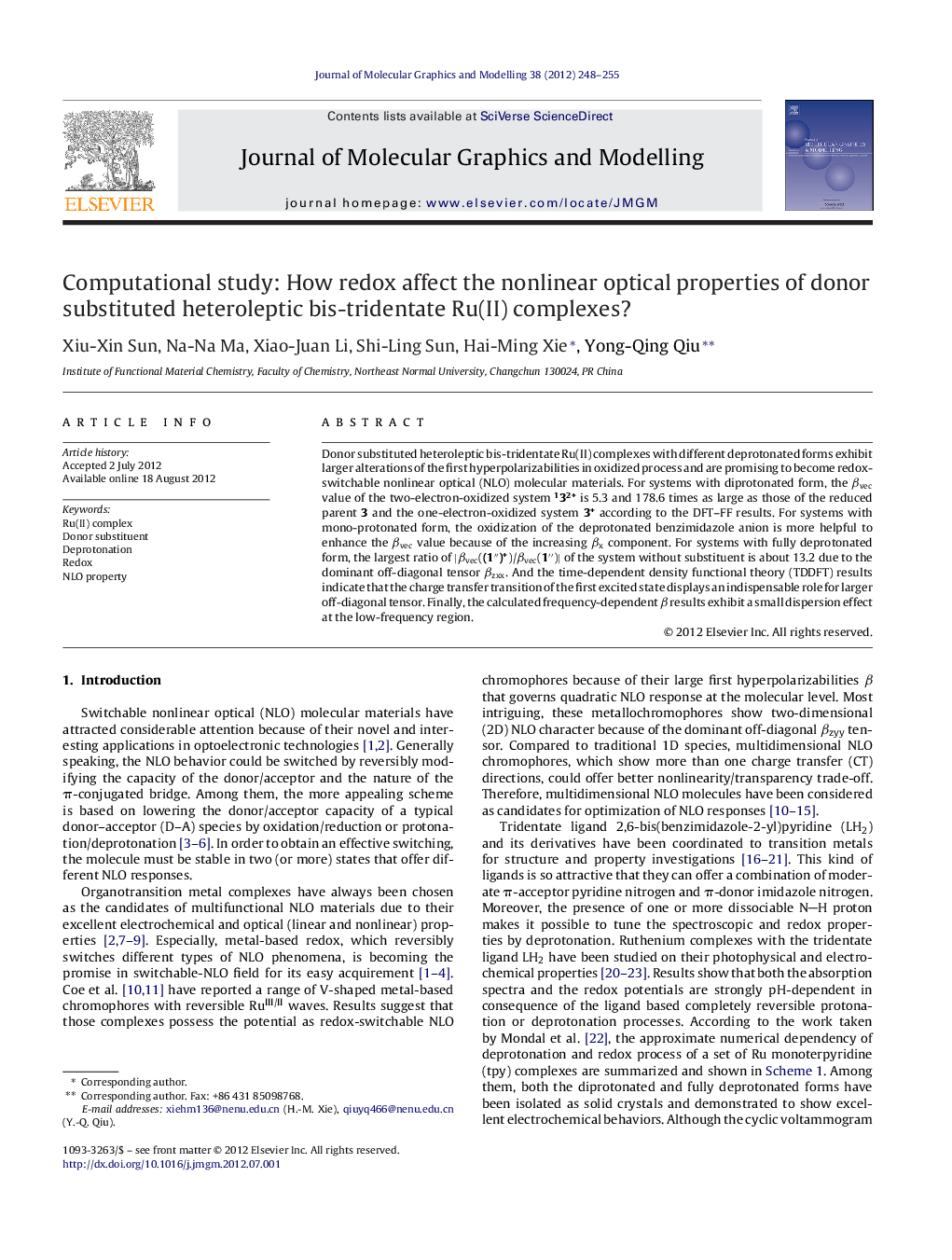| کد مقاله | کد نشریه | سال انتشار | مقاله انگلیسی | نسخه تمام متن |
|---|---|---|---|---|
| 444339 | 692967 | 2012 | 8 صفحه PDF | دانلود رایگان |

Donor substituted heteroleptic bis-tridentate Ru(II) complexes with different deprotonated forms exhibit larger alterations of the first hyperpolarizabilities in oxidized process and are promising to become redox-switchable nonlinear optical (NLO) molecular materials. For systems with diprotonated form, the βvec value of the two-electron-oxidized system 132+ is 5.3 and 178.6 times as large as those of the reduced parent 3 and the one-electron-oxidized system 3+ according to the DFT–FF results. For systems with mono-protonated form, the oxidization of the deprotonated benzimidazole anion is more helpful to enhance the βvec value because of the increasing βx component. For systems with fully deprotonated form, the largest ratio of |βvec((1″)+)/βvec(1″)| of the system without substituent is about 13.2 due to the dominant off-diagonal tensor βzxx. And the time-dependent density functional theory (TDDFT) results indicate that the charge transfer transition of the first excited state displays an indispensable role for larger off-diagonal tensor. Finally, the calculated frequency-dependent β results exhibit a small dispersion effect at the low-frequency region.
Redox effect on the static second-order nonlinear optical (NLO) properties of donor substituted complexes [(H2pbbzim)Ru(tpy-X)]2+ (X = H, Ph-NMe2 and monopyrrolo-TTF) with different deprotonated forms has been investigated with density functional theory (DFT). The results show that the studied systems, especially the diprotonated system with TTF unit, exhibit larger alterations of the first hyperpolarizabilities in oxidized process and are promising to become redox-switchable NLO molecular materials.Figure optionsDownload high-quality image (125 K)Download as PowerPoint slideHighlights
► Redox affects βvec value and causes an efficient second-order NLO switching.
► βvec value changes in various degrees due to the different oxidized center.
► Oxidation of donor causes larger βz while that of deprotonated ion causes larger βx.
► Frequency-dependent βvec suggests the efficient redox-switchable NLO responses.
Journal: Journal of Molecular Graphics and Modelling - Volume 38, September 2012, Pages 248–255